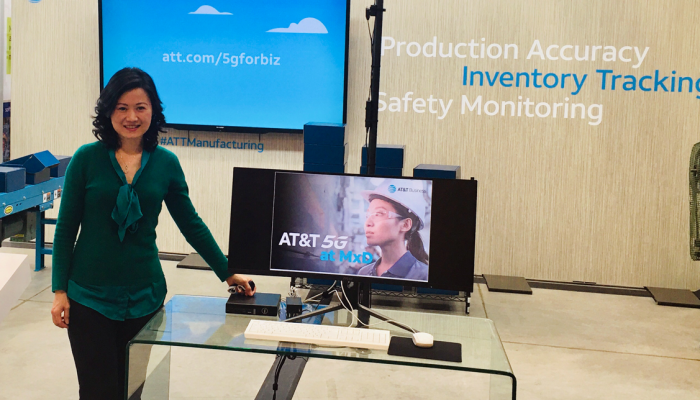When I talk to people about Industry 4.0 – that being, at its simplest level, applying smart technology to the business of manufacturing – many people bring up the loss of jobs as though robots are calling the shots in conference rooms around the world. “People always fear change,” Microsoft founder Bill Gates once said. He then pointed out that people feared electricity and coal and gas-powered engines, underscoring that the unknown is perhaps the most frightening thing of all.
As a technologist and user of technology, I see this digital story unfolding differently.
I feel a runner’s high when technology eases a burden or enables people or an organization to hit their goals. When it comes to manufacturing, let’s explore ways the smart factory might use digitization to enable people to reach their greatest potential.
First, in this modern era of business, a siloed approach to problem-solving does not work. We must collaborate across different industries and countries to find answers. We must be curious, together.
MxD: Where Innovators Play
https://drive.google.com/file/d/1CWgZQg7EZ0dy7ymIEbvnxIw186VU_vAm/view
Some really big players are stepping up. At a nondescript, 100,000-square-foot facility near downtown Chicago called MxD, AT&T is demonstrating how video intelligence using 5G technology and the Internet of Things (IoT) can provide near-real-time insights into operations directly on the factory floor.
While the acronym may sound like a top-secret operation from the latest Hollywood thriller, MxD is actually an amazing center of innovation in cooperation with the Department of Defense. MxD literally means “manufacturing times digital.” In a space about twice the size of a football field, nearly 300 partners are advancing the future of U.S. manufacturing. MxD is a testbed for digital manufacturing technology, the development of new products, data analysis and plenty of “what if” scenarios. Here is where AT&T is accelerating the deployment of 5G to the U.S. manufacturing industry. The goal is to accelerate 5G adoption, a technology Accenture predicts “will create a more seismic impact than any wireless technology evolution to come.”
What About Solving Real Problems for Real People?
In broad strokes, the story sounds fantastic, but I believe that real growth takes place at the crossroad of tech and humanity. So how does 5G impact people?
First, waste is one of the biggest bleeds for manufacturers. In lean manufacturing, the goal is to transform raw materials into what customers want to buy. Waste erodes profit and productivity. With AT&T’s video sensor technology, manufacturers can identify product abnormalities based on defined specifications and display real-time notifications. These alerts can then be charted on a dashboard to provide visibility into operations. Intrusion detection as a feature of video intelligence can inform management when someone approaches the conveyer belt to help ensure safety standards are met.
Beyond the measurable advantage, there’s a human side to this technology. As our work on the factory floor improves, there is more reason for people to celebrate measurable progress, be recognized for a job well done and take pride in one’s work.
Another example is safety monitoring. Manufacturers can create a “safety zone” in a designated area and receive near-real-time notifications to more efficiently manage operations. Object detection as a feature of video intelligence can notify management when someone places a nonessential item near the drill press, such as a tool or part.
A third example is inventory tracking. If you’ve ever walked the concrete floor of a plant, frantically searching for parts or supplies you thought were in stock, you know the stressful and costly side of inventory management. With AT&T’s technology, manufacturers can detect the number of boxes on a shelf and receive real-time notification when a box is removed. I like this seamless, Fitbit-style of work. While applying object detection as a feature of video intelligence, management can receive alerts if someone places the box outside of the designated area too.
Not to be too sci-fi here, but it is really interesting to see the role of AI and machine learning in AT&T’s IoT video intelligence to help businesses drive efficiencies on a near-real time basis. AT&T will be demonstrating how manufacturers can use video intelligence to monitor conveyor belt speed and production accuracy, monitor older equipment temperatures and maintenance, and monitor inventory levels and location. All of this is powered by AT&T 5GmmWave.
Advancing Humanity
Companies like AT&T and places like MxD are making the impossible possible. They advance humanity through ingenuity, collaboration and the next frontier of technology for manufacturers, the people who work in the factories and customers eventually benefit from those products. The factory of the future, then, is not something to be feared, but a vision to be embraced and a modern passageway to reach our greatest potential.
This post was sponsored by AT&T Business, but the opinions are my own and don’t necessarily represent AT&T Business’s positions or strategies.

